How Does Fixed Cost Management Work in Can Do?
In the Can Do project management software, fixed costs can be recorded, scheduled, and analyzed with precision. This type of cost is independent of actual resource usage or project duration and is typically used for expenses that occur as one-time or recurring fixed amounts.
What Are Fixed Costs in Can Do?
Fixed costs (also referred to as operating costs) are project-related amounts that are not dependent on the duration of a project element or the effort of assigned resources.
Typical examples of fixed costs include:
-
License and maintenance fees
-
Consulting or service flat rates
-
Travel cost allowances
-
Rent, training costs, or purchases
-
Credit notes
These amounts are defined as fixed values and do not automatically change due to schedule shifts or project extensions.
Where Are Fixed Costs Entered and Displayed?
Fixed costs are entered and managed under the "Finance and Budgets" tab, in the "Operating Costs" window of a project element (e.g., project, phase, or work package).
The following functions are available there:
-
List of all fixed costs assigned to the object
-
Cost type
- Description
- Time period (from/to)
- Amounts (Planned/Actual)
-
-
- Budget
The following summary fields are also displayed:
-
Total Costs: Fixed costs for the current object
-
Total Including Sub-Objects: Cumulative fixed costs including all contained sub-objects

How Are Fixed Costs Assigned Over Time?
In Can Do, fixed costs can be planned either automatically or manually with specific dates. This is done via the date fields in the Costs window.
Default Mode – Costs on Start Date
In the default setting, fixed costs are automatically assigned to the start date of the object.
If the object is moved in the project plan, the cost date automatically shifts along with it.
Fixed Time Period
- In this mode, costs can be assigned to any specific date or a defined period within the object’s scheduled timeframe.
- This allows for a realistic representation of contractually agreed payments or recurring monthly fees.
- If a time range is specified, the cost is distributed evenly across that period.
This planning method is especially useful for long-running project phases where a precise distribution of costs over time is required (e.g., monthly rent costs over six months).
How Are Cost Types Managed?
The available cost types are centrally defined for the entire organization.
Project team members can select from this list, but cannot create new types themselves.
Maintenance is handled by the Can Do administrator.
What Additional Functions Does the Costs Window Offer?
Entering Actual Costs
- In the "Actual Costs" column, the actual amount incurred can be recorded for each cost type.
Adding Descriptions
- An individual description or comment can be added for each fixed cost entry — useful for internal notes, invoice references, or other remarks.
Deleting Entries
-
A fixed cost entry can be removed via the delete button, provided the object is not yet completed.
How Are Fixed Costs Evaluated?
Can Do provides extensive options for time-based analysis and filtering of fixed costs, for example in:
-
Project controlling views
-
Reports for finance departments
-
Evaluations by cost type, time period, department, etc.
Conclusion
Fixed costs in Can Do offer a powerful and structured way to plan and analyze non-resource-based project costs.
The clear separation between operating (fixed) and personnel costs, flexible time control, and extensive evaluation features make this module a key tool for professional cost controlling in project management.
